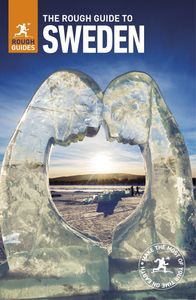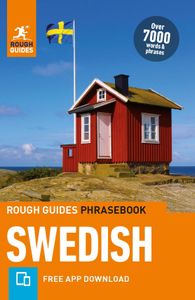The fortress
The thirteenth-century moated fortress, set on a rocky promontory, is Varberg’s most prominent attraction. It was home to the Swedish king Magnus Eriksson, who signed important peace treaties with Denmark here in 1343, aimed at preventing further incursions into Swedish territory. The great bastions were added for protection by the Danish king Christian IV in the seventeenth century; ironically, they were completed just in time for him to see the fortress fall permanently to Sweden in 1645. The entrance is on the fortress’s seaward side, either through the great archways towards the central courtyard or by a side route, the uneven stone steps which lead up to a delightful terrace café. Tours in English will take you into the dungeons and among the impressive cocoa-coloured buildings that make up the inner courtyard, and you can even stay in a private youth hostel in the fortress, which has been carefully preserved to retain most of its original features.
The museum
It’s the fortress’s museum that deserves most of your attention. The most unnerving exhibit is the Bocksten Man, a murder victim who was garrotted, drowned, impaled (three stakes were thrust through his body, in the belief this would stop his spirit seeking out his murderers) and thrown into a local bog around 1350, where he remained until 1936 when a farmer dug him up while planting crops. His entire garb preserved by the acidity of the bog, the Bocksten Man sports the Western world’s most complete medieval costume, including a cloak, a hood, shoes and stockings. In addition to the skeleton, an unnerving Madame Tussaud-like figure with thick, ringleted blond hair now forms the centrepiece of the exhibition and provides a truly arresting idea of what the Bocksten Man really looked like. An engaging film with English subtitles runs through the carbon-14 dating procedure used to establish the man’s age.
Elsewhere in the museum check out the sensitive work of Richard Bergh, Nils Kreuger and Karl Nordström, the so-called Varberg School. These three artists linked up in the last years of the nineteenth century and developed a plein-air style that reflected the moods and atmosphere of Halland and Varberg in particular. Night scenes of the fortress beneath the stars show the strong influence of Van Gogh; in other paintings, the misty colours create a melancholy atmosphere. Check out, too, the collection of ungainly swimming trunks and bikinis sported by bathers in Varberg down the years. Refreshingly Scandinavian, it was still common to bathe naked until the late 1910s, a practice depicted by the Näcken, a nude male water sprite who features prominently in Swedish folklore.
The prison
Overlooking the sea, and painted custard and cream, the 1850 fortress prison seems like a soft option next to the looming fortress in whose shadow it lies. The first Swedish prison built after the American practice of having cells for individual inmates was begun, it housed lifers until 1931, when the last one ended his days here.
Surfing in Varberg
From Apelviken bay, 2km south of the centre along the Strandpromenaden footpath, it’s easy to go wind- kite- and wave surfing. Surfers Paradise at Södergatan 22 (t 0340 67 70 55, w surfers.se) rent out all sorts of boards and equipment to get you out onto the water. They’re open from June to August (Mon–Fri 1–6pm, Sat 10am–2pm, Sun noon–4pm). There’s also a good sandy beach at Apelviken for easy access into the sea.
Varberg’s nudist beaches
In keeping with Varberg’s long tradition as a bathing resort, the town has three separate-sex nudist beaches, barely a ten-minute walk from the town centre. Take the signed Strandpromenaden footpath along the shore to reach the first of them: Skarpe Nord for women only; next comes another women-only beach, the coarsely named Kärringhålan, or “Old Crone’s Gap”; then, five minutes beyond here, Goda Hopp (“High Hopes”) is the men’s nudist beach. All beaches consist of smooth rocks and patches of grass rather than sand, and steps lead into the sea for easy swimming.




















